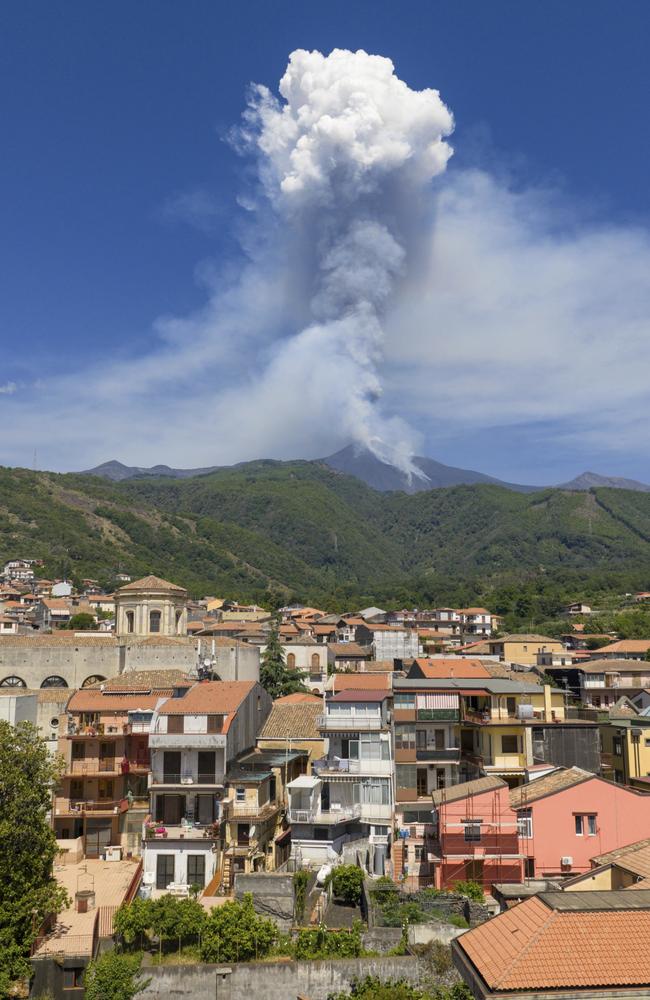Tourists flee as Mt Etna volcano erupts in Italy
One of the world’s largest volcanoes has spectacularly erupted sending visitors fleeing off the mountainside as “lava bombs” landed.
One of Europe’s largest volcanoes has erupted sending hot ash as high as five kilometres into the air.
Mt Etna, on the Italian island of Sicily close to the city of Catania, erupted on Monday.
Video shows people who were on the volcano running for safety. One tour firm told US broadcaster CNN that they had as many as 40 people on the volcano when it erupted. The Sicilian Civil Protection Agency said about a dozen tour operators work at the volcano at any given time.
No injuries have been reported.
Italy’s National Institute of Geophysics and Volcanology (INGV) said there were “strombolian explosions of increasing intensity”.
Strombolian eruptions are relatively mild, for volcanoes, and include the ejection of cinders and burning chunks of lava – known as “lava bombs” – hundreds of metres into the air. Lava flows are often thicker and so are slower and shorter.

“From a seismic point of view, the values of the magnitude of the tremor are currently elevated with a tendency to increase further,” stated the INGV.
Authorities have said the lava flows were likely caused by the collapse of material on the northern side of Etna’s south east crater.


President of the Sicilian Region, Renato Schifani said it was following Etna’s eruption with “utmost attention”.
The partial collapse of the crater, which generated an impressive eruptive cloud several kilometres high and a pyroclastic flow, represents a phenomenon that we are following with extreme caution,” he was reported as asking by Italian broadcaster Rai.
He added the eruptions effects have so far been confided and there is so far “no danger” to the local people.

Air traffic has also not been affected.
More than a million people visit Etna each year which is relatively easy to hike.
It is one of the world’s most active volcanoes and is almost constantly in some level of activity. Despite that, this is the first major eruption since 2014.




